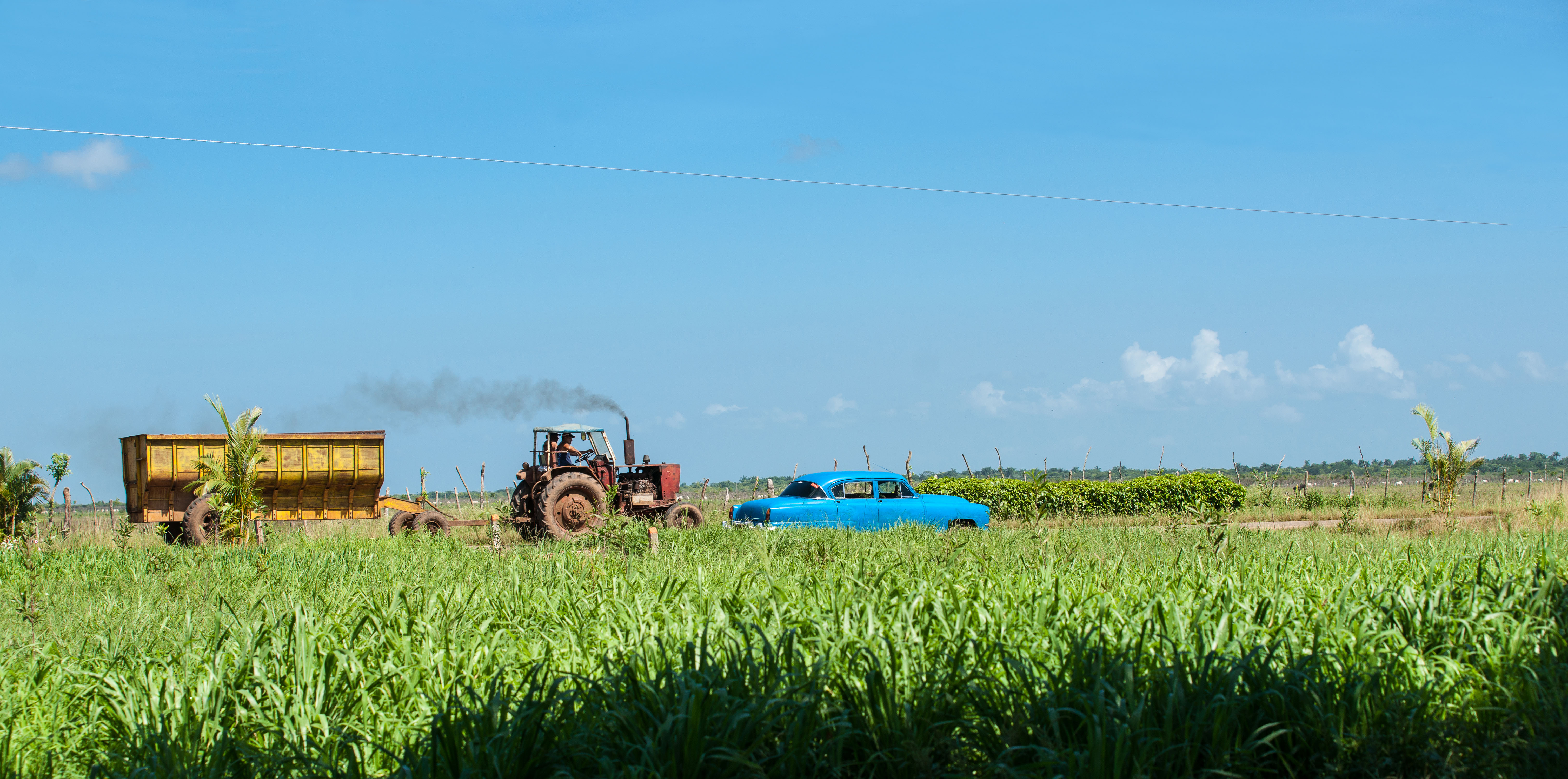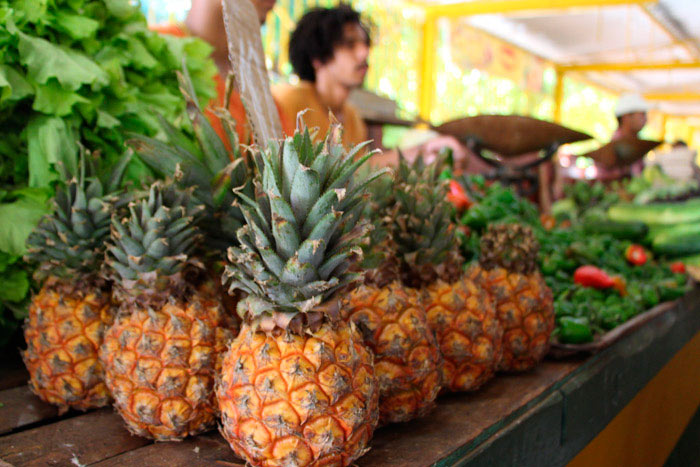Story and photos by Karen McMahon
This story appears in the June 2017 issue of Potato Grower. It was originally published on Syngenta’s Thrive website.
Last summer, a team of USDA employees stepped off a plane in Havana, Cuba. Unremarkable at first glance, this moment signaled a profound change in U.S.-Cuba relations. The last time a USDA employee was stationed in Cuba on official business was in 1959. But with diplomatic relations restored, U.S. government agencies will once again have the opportunity to set up offices on the island.
 Restrictions banning U.S. citizens from traveling to Cuba had been in place for more than half a century, until President Barack Obama eased some of them in late 2014 with the restoration of diplomatic relations. With new policies in place, the number of Americans traveling to Cuba has risen sharply, up 38 percent in 2016 from the previous year.
Restrictions banning U.S. citizens from traveling to Cuba had been in place for more than half a century, until President Barack Obama eased some of them in late 2014 with the restoration of diplomatic relations. With new policies in place, the number of Americans traveling to Cuba has risen sharply, up 38 percent in 2016 from the previous year.
The U.S. trade embargo against Cuba remains, however, much to the chagrin of some growers and agribusinesses. The U.S. government relaxed trade restrictions in 2000 for food exports and medicine for humanitarian reasons, but Cuba has to pay for those shipments on delivery with cash. While Cuba does buy some U.S. food today, it purchases more from countries that provide credit terms to the cash-strapped nation. The inability to fully compete in the Cuban market continues to frustrate many in the U.S. ag industry. But until Congress repeals the Cuban trade embargo, the rules for agricultural exports remain in place.
Trade Potential
In recent years, the U.S. agricultural community has looked at Cuba with a great deal of interest. After all, the island, just 90 miles from Miami, has 11 million residents, and in 2008 U.S. agricultural sales to Cuba peaked at $700 million. The U.S. could have a big trade advantage selling to Cuba because of its geographic proximity, and plenty of U.S. products are in demand there.
“Many in agriculture are looking for ways to expand market access for our U.S. agriculture products in Cuba,” says Laura Peterson, head of federal government relations at Syngenta.
In addition, Cuba’s agriculture industry desperately needs inputs, equipment and technical know-how. The dissolution of the Soviet Union in 1991 left Cuba’s government-run farms in disarray, says Jorge Mario Sanchez Egozcue, a professor of economics at the University of Havana. It is estimated Cuba lost $6 billion in Soviet subsidies, and Sanchez says the country lost 90 percent of its energy supplies and nearly all its fertilizer imports.
“The impact was equal to a tsunami or a war,” he continues. “No one in the world anticipated it. Still, to this day, we are living that shock.”
Without money to invest in domestic production, food shortages ensued. The government enacted farm reforms and transferred some land to cooperatives, says Amando Nova Gonzalez, an economics researcher at the University of Havana. But without government inputs, crop production stagnated. About 60 percent of Cuba’s farmland was abandoned, Gonzalez says, with much of the soils degraded from abuse by machinery and chemicals used extensively under the socialist model.
During this difficult period, the University of Florida began working with Cuban economists and agricultural scientists. University ag economist William Messina Jr. is among those who have traveled extensively to Cuba.
“Keep in mind that Cuba has tremendous potential to be a food producer,” Messina says. “Its agriculture is very heavily based on cooperatives. The problem is, they can’t get the inputs they need, or if they get them, it’s often not when they need them.”

In particular, Cuban farms lack fertilizer, which is only available in limited quantities, Mesinna says. And Cuban farms can only buy from the government; no private sources of farm inputs are available.
“Much of the farm equipment is very old,” Messina says. “It’s not uncommon for a cooperative to cannibalize older tractors and equipment for parts. Mechanization is far below what it was in the late 1980s.”
Since 2008, Cuba has undertaken substantial economic reforms. The biggest changes occurred in agriculture, where 3.7 million acres of unused land was transferred in usufruct—which gives individuals the right to use the property of another—to 156,000 individual producers, according to Gonzalez. Acreage transfers ranged from less than 33 acres to 168 acres. Growers may farm the land themselves or enter into a cooperative arrangement.
Today, 70 percent of Cuba’s farmland is held in various types of what the government calls “private” ownership, although titles to land remain with the state in most instances. To boost productivity, new reforms go even further, and efforts are underway to shift some decision-making from the government to a more local municipal level, Gonzalez says.
Embargo Politics
American growers and ag businesses in favor of repealing the embargo welcomed the support of the Obama administration. In March 2016, Obama visited Cuba with a government contingent that included then-U.S. secretary of agriculture Tom Vilsack.
During the visit, Vilsack met with Gustavo Rodriguez Rollero, Cuba’s minister of agriculture. The two signed a memorandum of understanding that paved the way for the USDA to post staff at the U.S. embassy in Cuba and exchange information with Cuban officials. The goal is to learn more about the country’s animal and plant health, climate change and farming methods.
Despite these recent policy shifts, sectors of the U.S. ag community, including some growers in neighboring Florida, remain wary of lifting the embargo.
“Cuba produces the same crops and commodities as we do in Florida,” Messina says. “So there is a lot of concern about invasive pests and diseases.”
Another concern is the subsidized competition. The Cuban government leases the land to farmers at no cost to grow crops.
For their part, Cuban trade officials have said the embargo should be repealed and free trade allowed. Some analysts have also said open trade with the U.S. with credit terms will help Cuba rebuild its agriculture industry. Today, Cuba imports nearly $2 billion in agricultural products, including rice, wheat, corn, soybeans, soy products, poultry and nonfat dry milk.
But in the end, the decision to repeal the embargo lies with the U.S. Congress. And until Congress takes action, supporters and opponents can only speculate on trade potential and challenges.